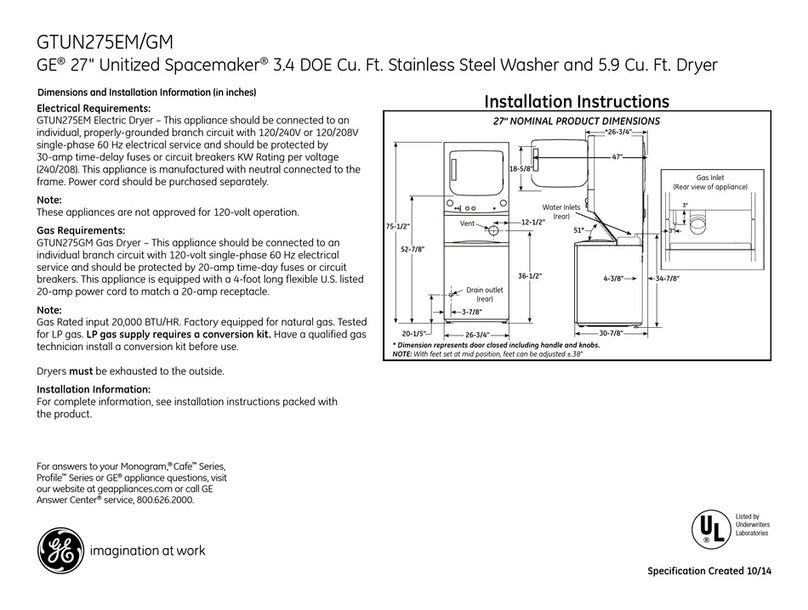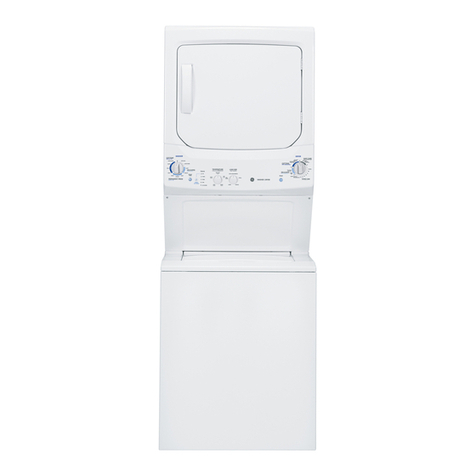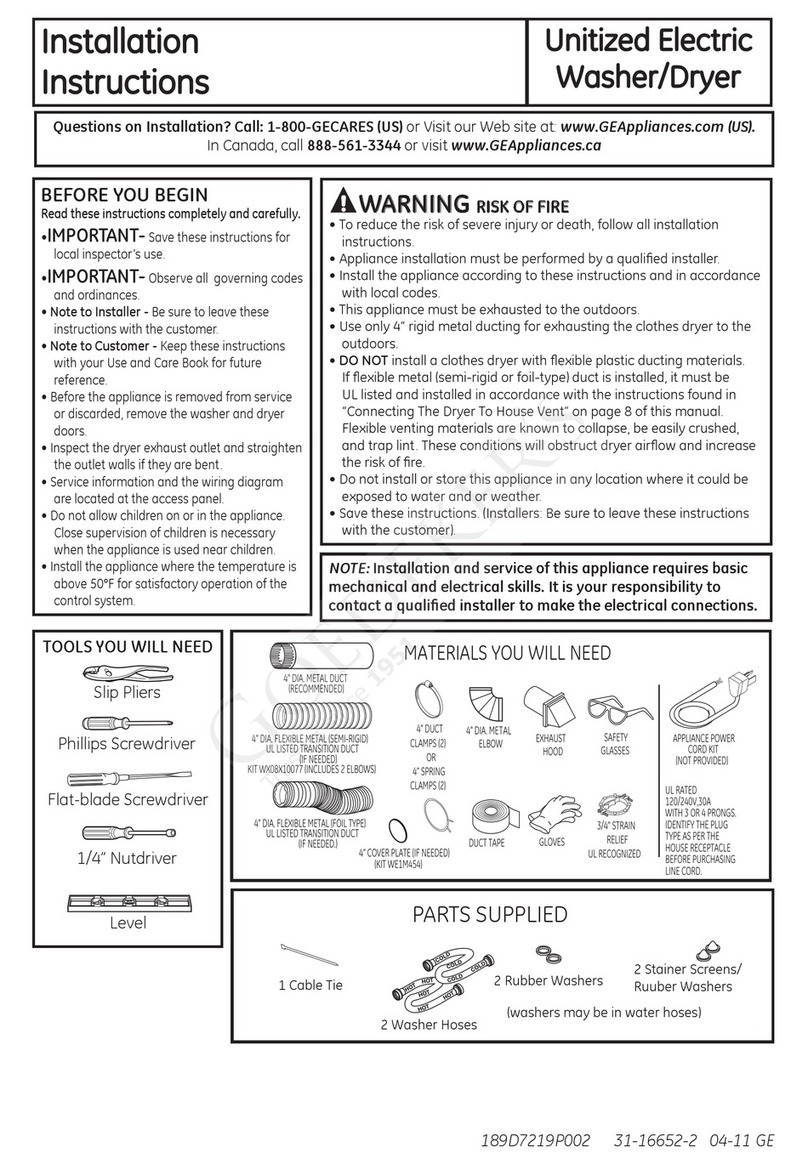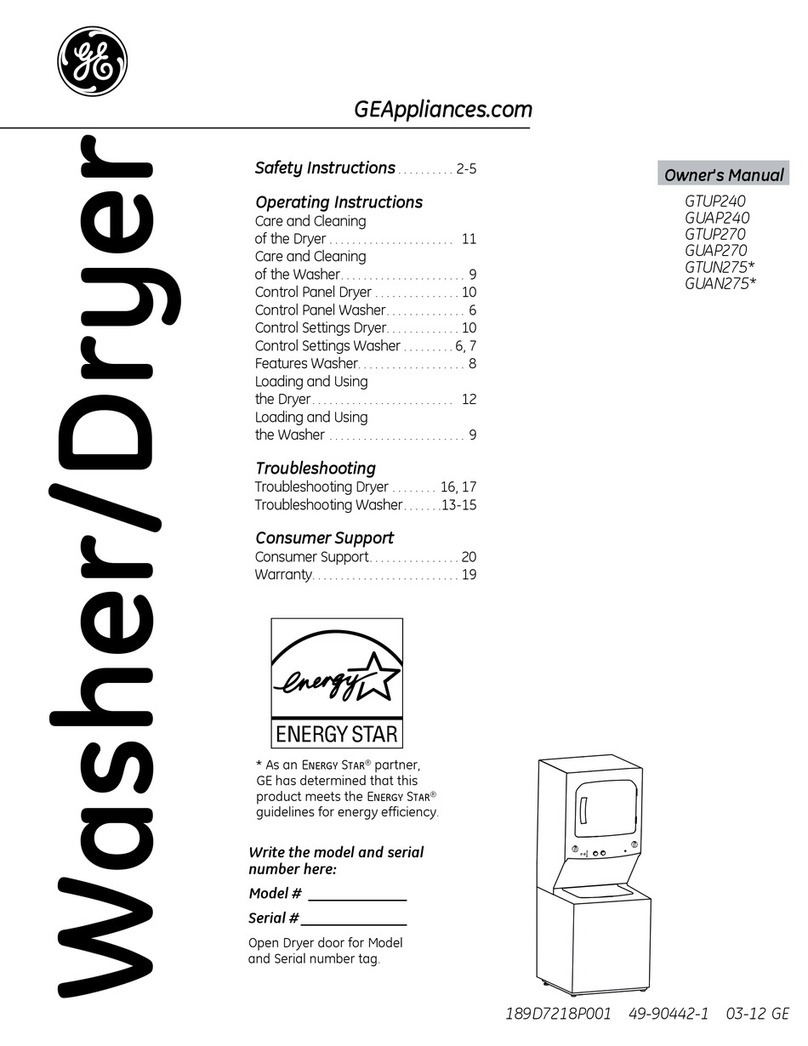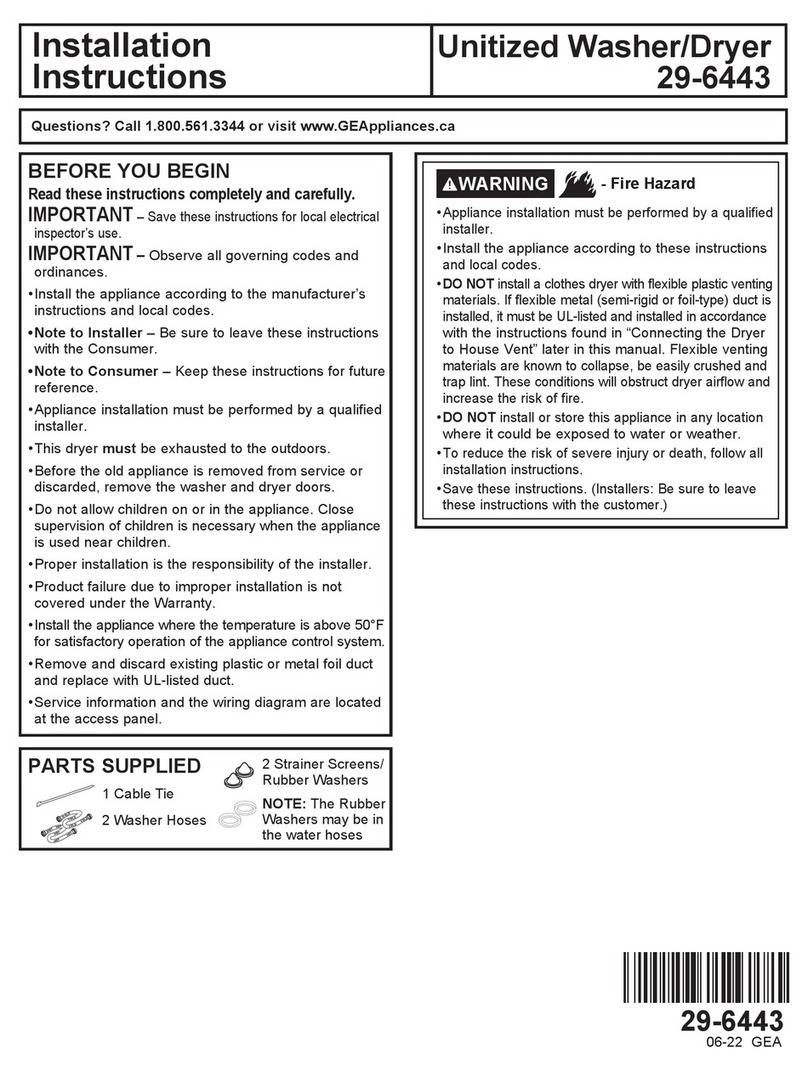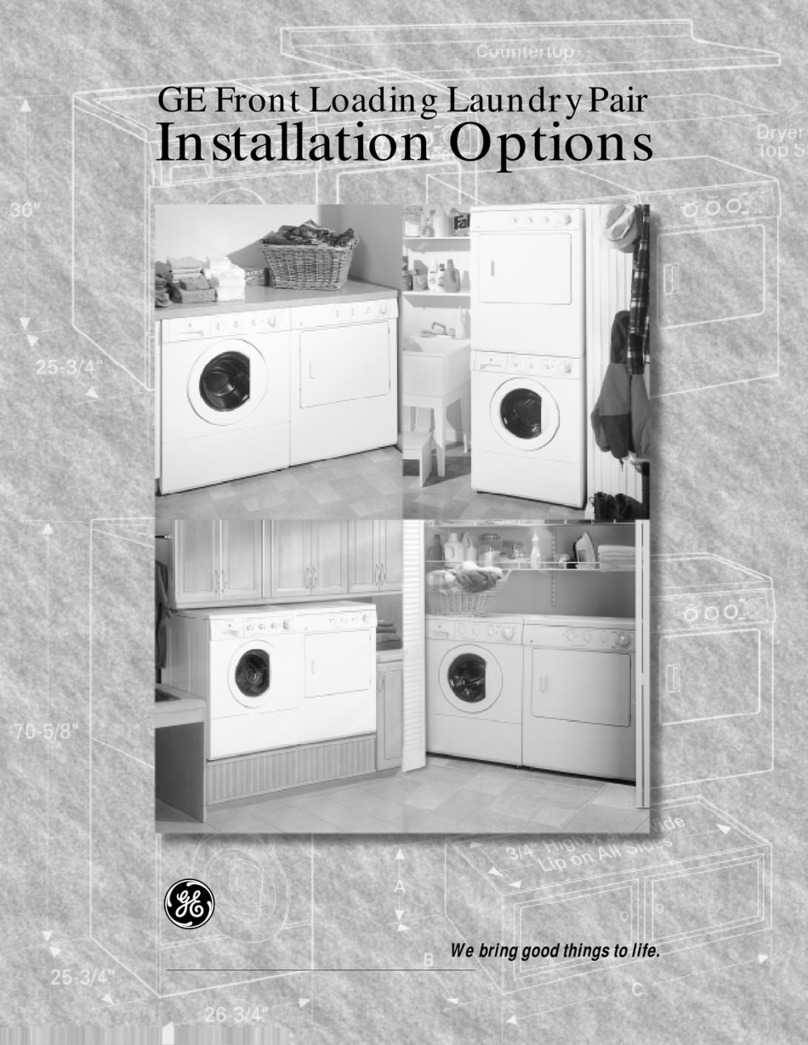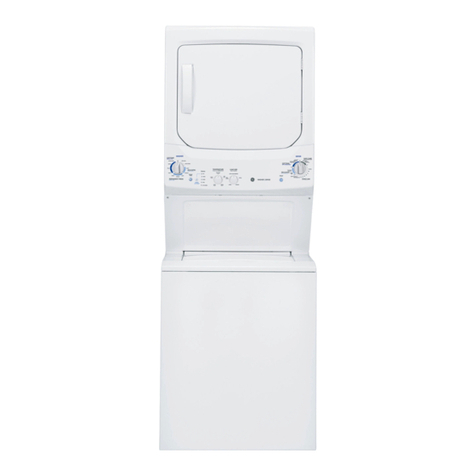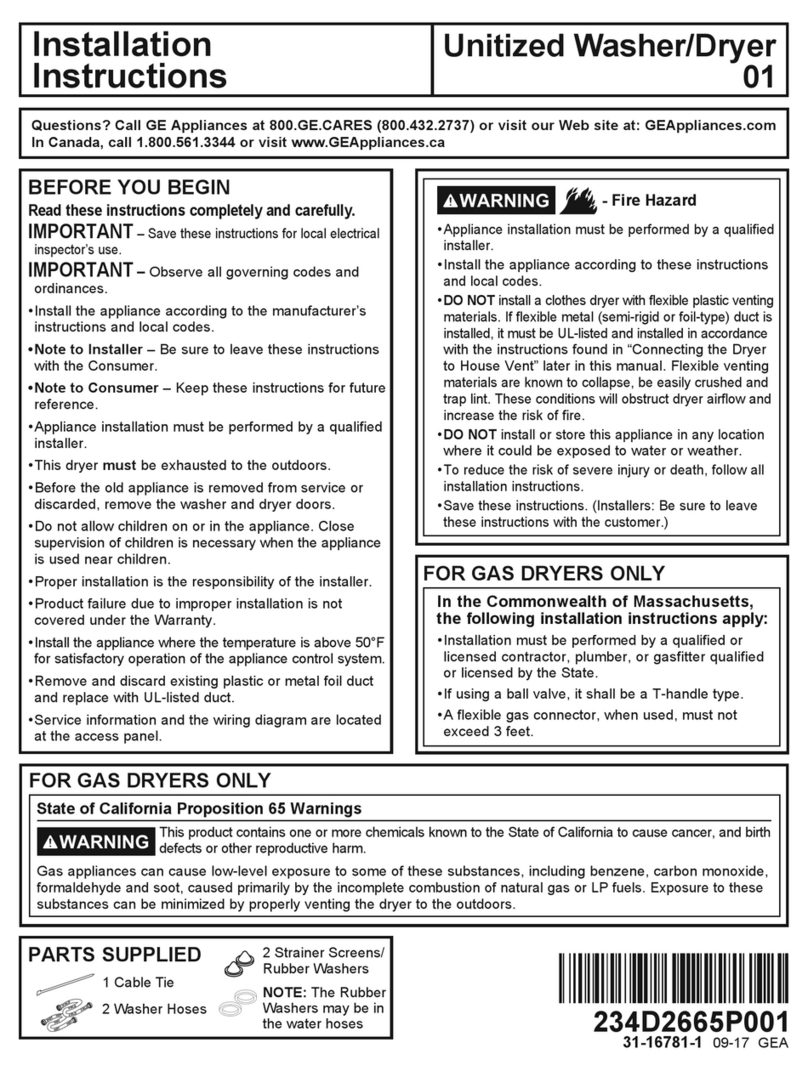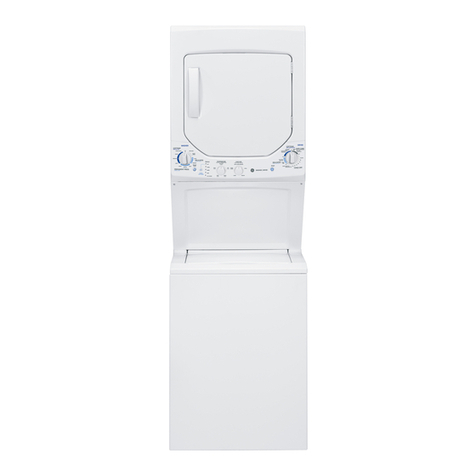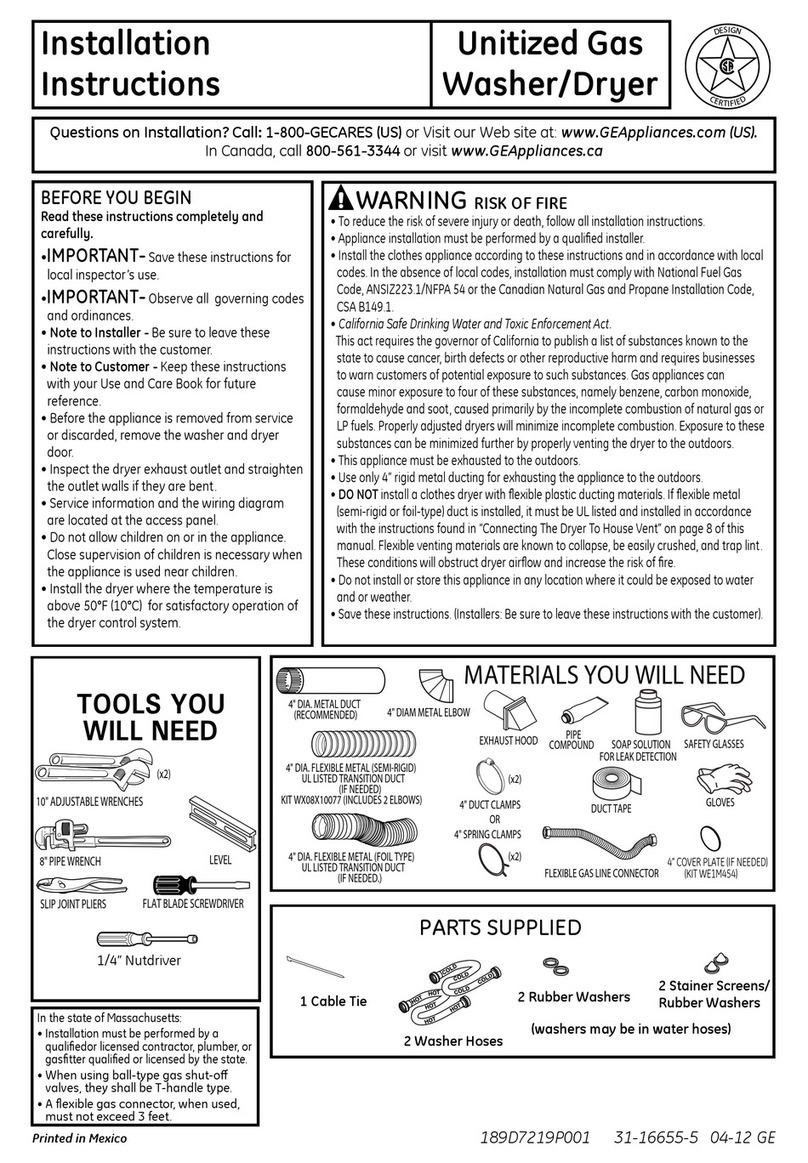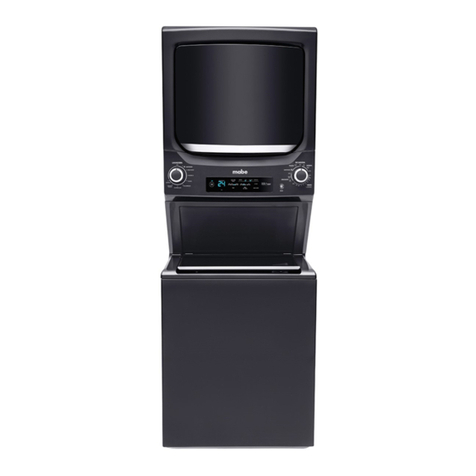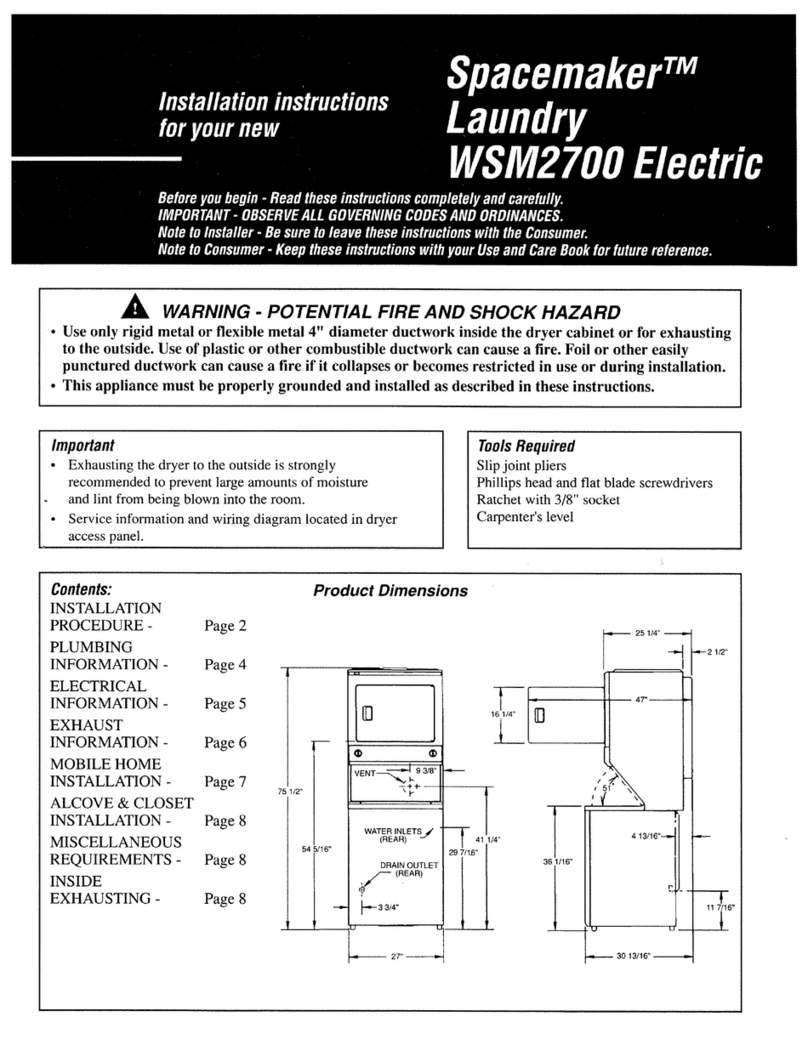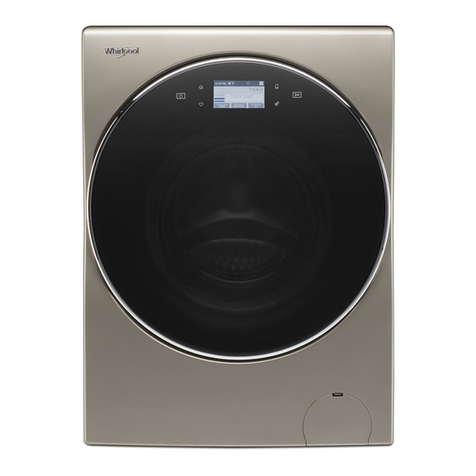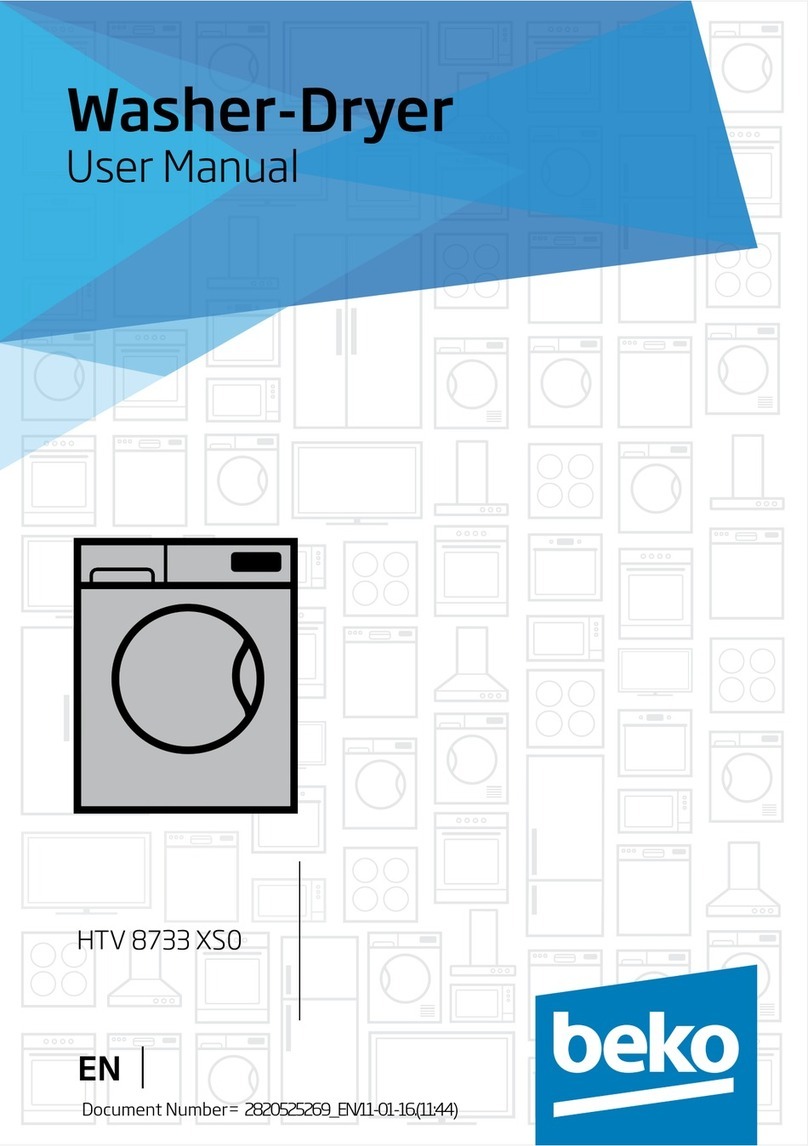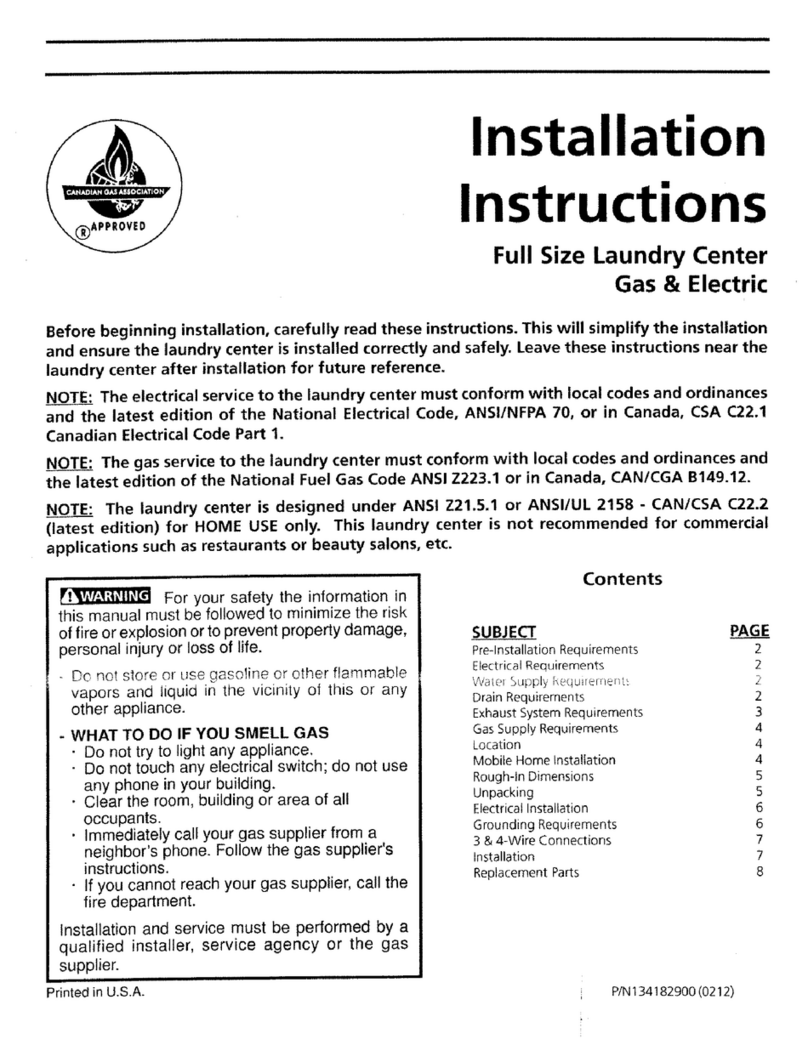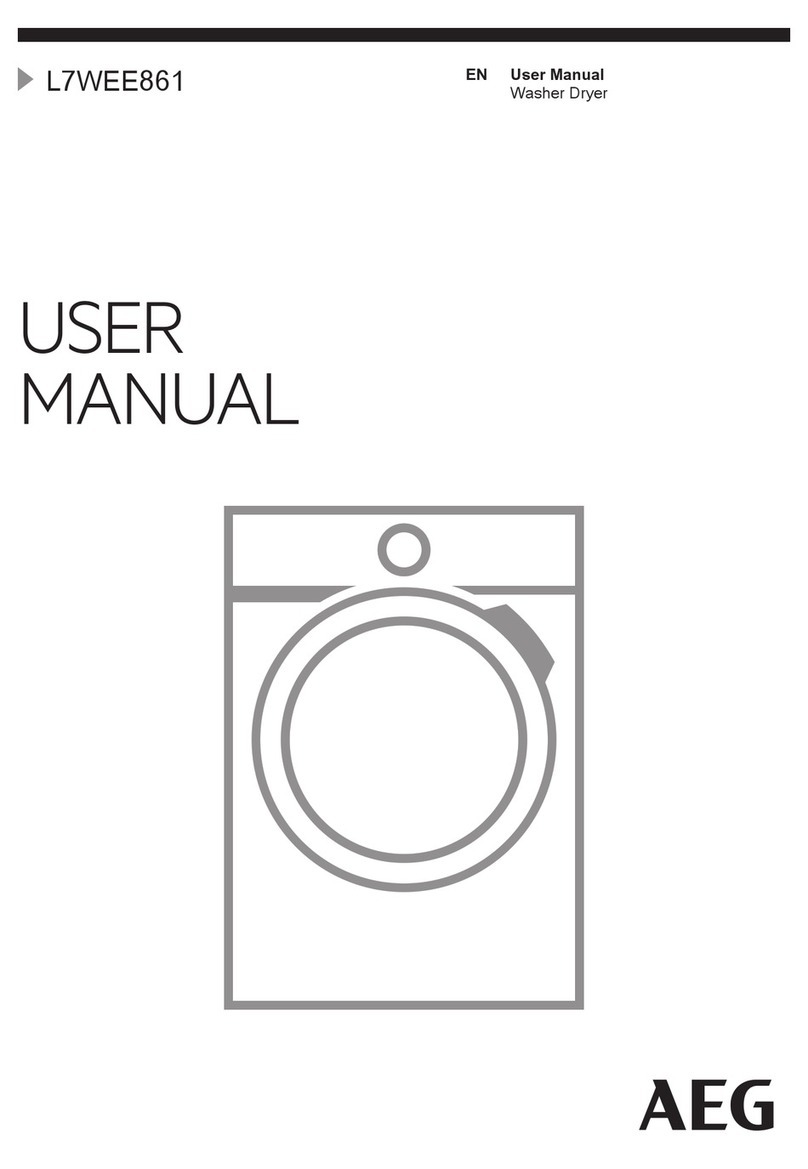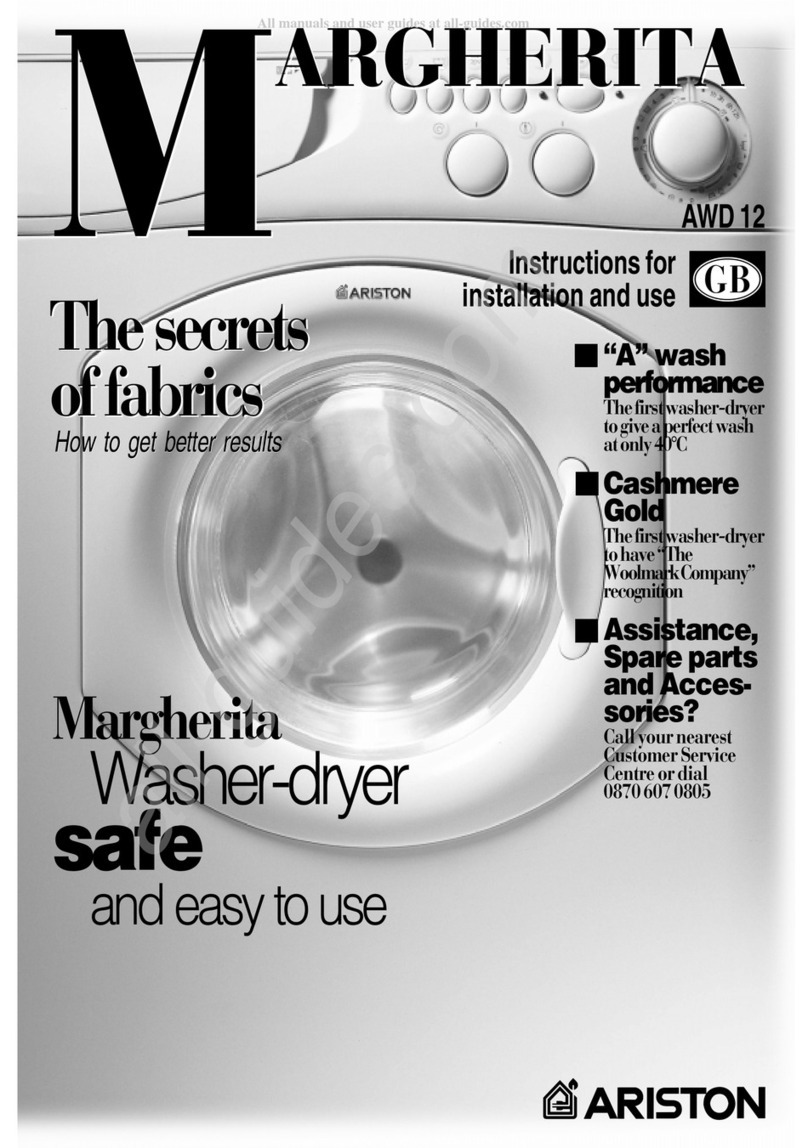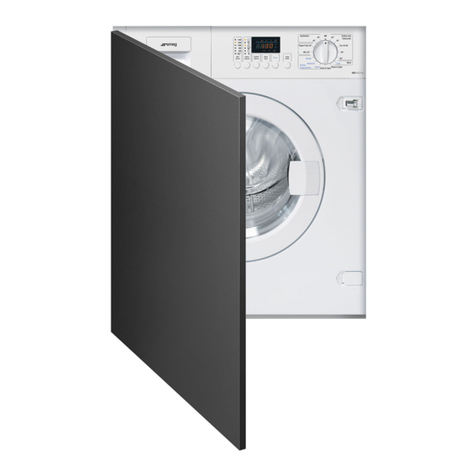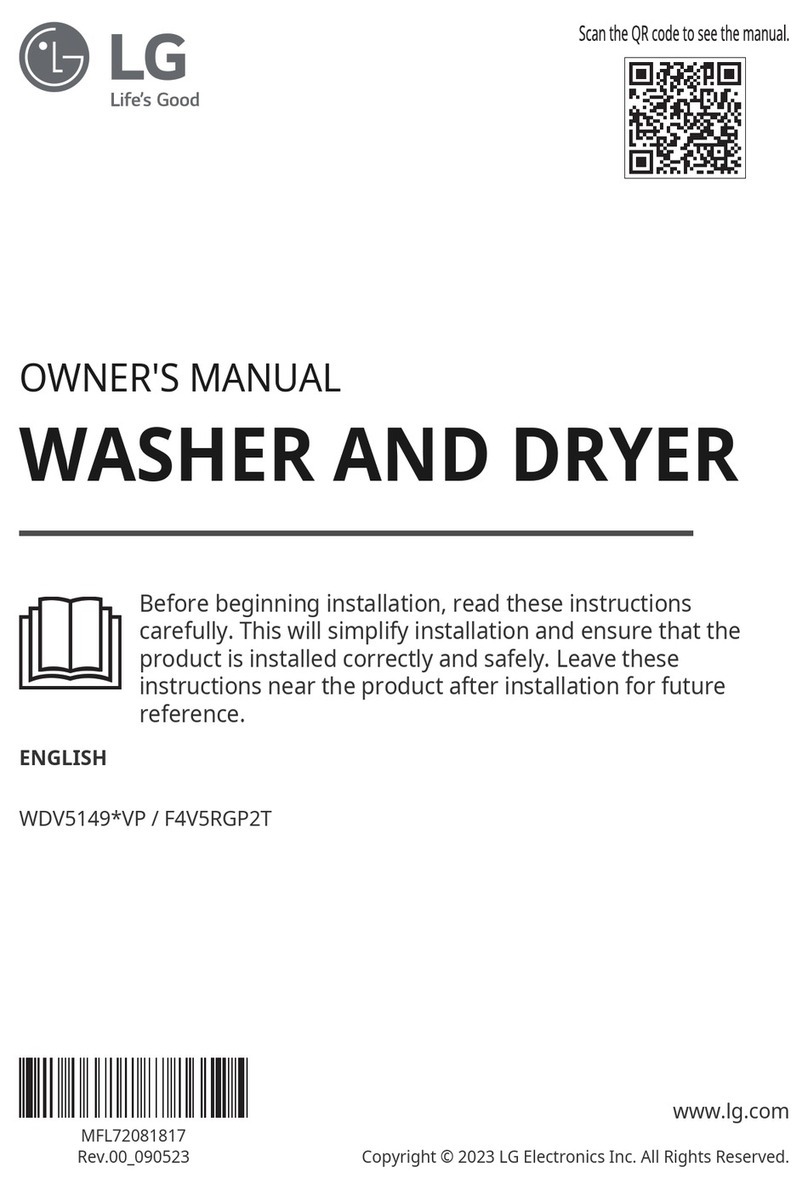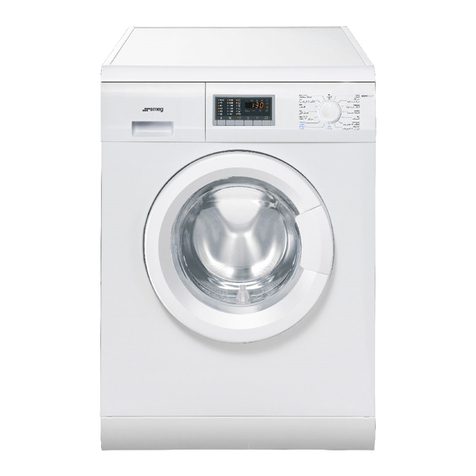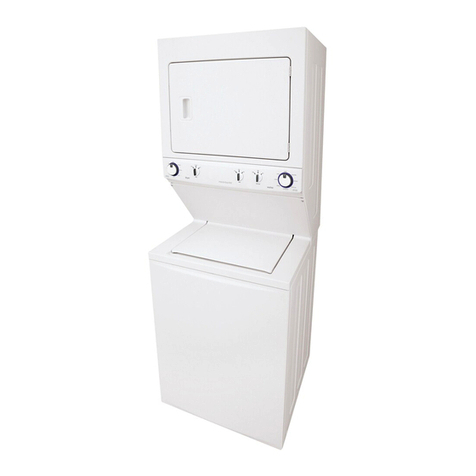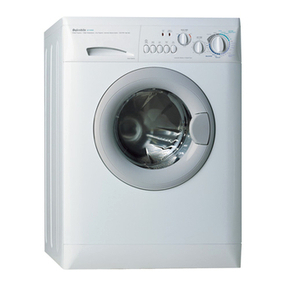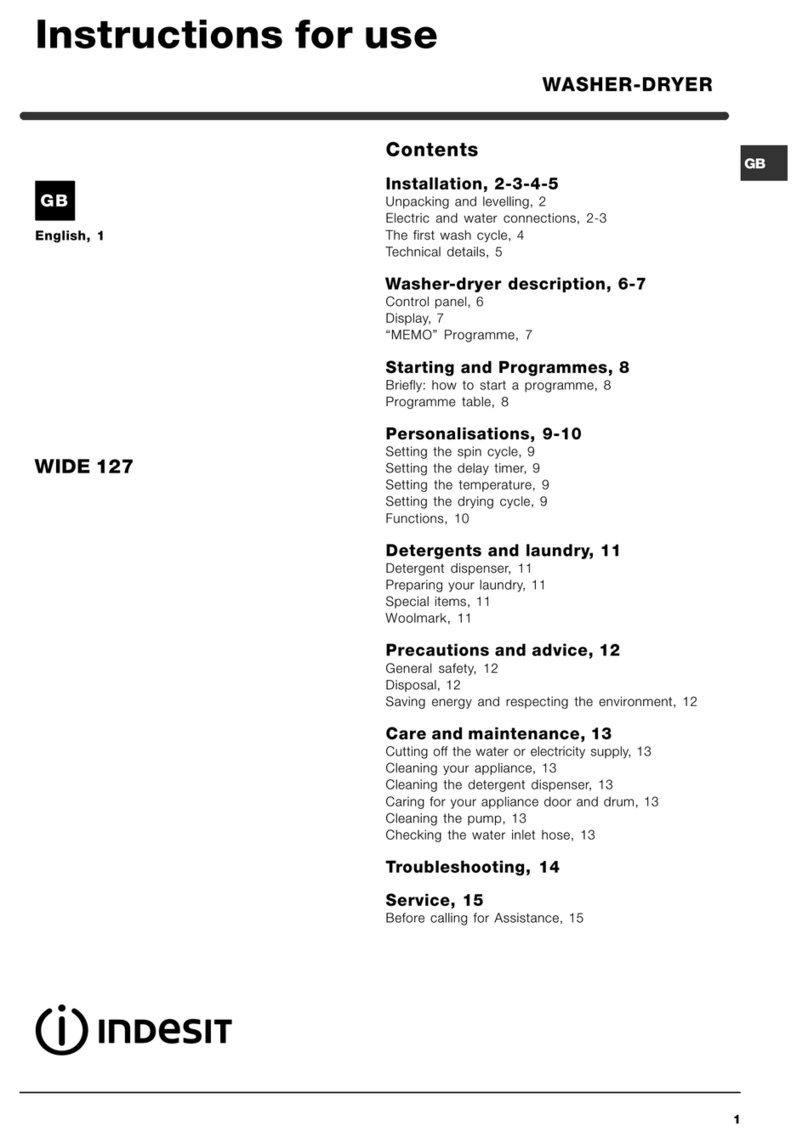IIMPORIANTSAFETY
Read all instructions before using INSTRUCTIONS
this appliance.
W~G-To reduce the risk
of fire, electricshock, or injury to
pmons whenusing yourappliance,
follow basic precautions,
including the following:
.Use this appliance only for ik
intended purpose as described in
this Use and Care Book.
●This appliance must be
properly installed and located in
accordance with the Installation
Instructions before it is used. If
you did not receive an Installation
Instructions sheet with your
appliance, you can obtain one by
contacting the service location
nearest you.
–Properly ground to conform
with all governing codes and
ordinances. Follow details in-
Installation Instructions.
–Locate where the temperature is
above 50”F.(10”C.)for
satisfactory operation of the
control system. Do not install or
store the appliance where it will
be exposed to the weather.
–Comect to aproperly rated,
protected and sized power-supply
circuit to avoidelectrical overload.
—Exhausting to the outside is
STRONGLY RECOMMENDED
toprevent large amounts of
moisture and lint from being blown
into the room. Carefhlly follow the
details in the Installation
Instructions. If your appliance is
notvented to the outside, see
special instructions on page 25.
.Turn off wa~r fauce~ when the
washer is not in use to relieve
,’; .pressure on hoses and valves, and
‘yw’;’s*t&’&i~i~zeleakage if ahose or
valve should break or rupture.
a●When disconnecting this appli-
. . ante pull by the plug rather than
Make sure that the cord is located
so that it will not be stepped on,
tripped over or otherwise subjected
to damage or stress.
●Do not repair or replace any
part of the appliance or attempt
any servicing unless specifically
recommendedin thisUse and Care
Book or in published user-repair
instructions that you understand
and have the skills to carry out.
To minimize the possibility
of injury:
●Do not mix chlorine bleach with
ammonia or acids such as vinegar
and/or rust remover. Mixing can
produce atoxic gas which may
cause death.
●Do not wash or dry articles
that havebeen cleaned in, washed
in, soaked in, or spotted with
combustibleorexplosivesubstances
(such as gasoline, degreasers,
dry-cleaning solvents, kerosene,
etc.) which may give off vapors
that could ignite or explode.
Do not add these substancesto the
wash water,and do not use these
substances around your washer
and dryer during operation.
.~DROGEN GAS is produced
by the chemical action within
your waterheater and the gas can
accumulate in the waterheater
ador waterpipes if hot waterhas
not been used for aperiod of two
weeksorlonger.HYDROGENGAS
CANBE EXPLOSIVE UNDER
THESE CIRCUMSE4NCES.So to
preventthe possibility of damage
or injury, if you have not used hot
water for two weeks or more, or
moveinto aresidence in which the
hot water system may not have
been used for some time, turn on
allhot water faucets and allow
them to run for several minutes
before using any electrical
appliance which is connected to
the hot water system. This will
allow any hydrogen gas to escape.
Since the gas is flammable, do not
smoke or use an open flame or
appliance during this process.
●Never reach into washer while
it is moving. Before loading,
unloading or adding clothes, push
the cycleselector knob in, then
wait until the machine has
completely stopped before
opening the lid.
●Neverreach into the dryer
while the drum is moving. Before
loading, unloading or adding
clothes, wait until the drum has
completely stopped. I
●Close supervision is necessary
if this appliance is used by or near
children. Do not allow children
to play inside, on or with this
appliance or any discarded
appliance. Dispose of discarded
appliances and shipping or
packing materials properly.
Before discarding awasher or
dryer or removing them from
service, remove the lid or door.
cKeep all laundry aids (such as
detergents,bleaches, fhbnc softeners,
etc.)out of the reach of children,
prefemblyinalockedcabinet.Observe
all warnings on container labels to
avoidpersonal injury.
●Keep the floor around your
appliances clean and dry to redu,ce
the possibility of slipping. -“’” “?/
I(continued nextpage)
>1
the cord to avoidd~age to the
cord or junction of cord and plug.
